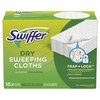I don't know if this counts as a clever trick, but here it is:
With simple and low budget reloading gear, I can load ammo on my couch while watching TV. Initially, you might think: "Whoa, that doesn't sound safe!" But since it's single stage and I'm checking my results between each stage, it works out swimmingly.
Here's the gear:
- Lee Hand Press breech lock version now available, but mine's the old thread-in type. I size and decap pistol brass with this and put the cases in the loading tray, bullet end down, so I can see they're decapped and with dirty primer pockets.
- Lee primer pocket cleaner. I use it by hand, as it doesn't take much and I don't want to drill it deeper or anything. If you were gentle, you COULD chuck this in a small cordless screwdriver. As I clean the primer pockets, I put them into the next tray bullet end up.
- Lee Hand Prime tool. This is my favorite way to prime so far. I get a good touch with it.
- Expander die to slightly bell the case mouths; move to the other tray, still mouth end open
- Powder funnel + dippers. Lee makes a dipper set. They're marginal for pistol calibers, as they don't have a lot of in-between sizes, but a member here pointed out to me that I could file down 9 mm cases to get the sizes I need. For example, loading 38 Spl yesterday, I found the 0.3 cc was too small and the 0.5 cc is too big. I can make a 0.4 cc myself. It'll be the perfect size for a 38 Spl load of Win 231.
- Lee's Safety Powder Scale is inexpensive and good to check the dippers. The Lee dippers throw less than they're reported to if you strike them level like you're supposed to, so it's worth checking them.
- Seat bullets with the seating die in the Lee Hand Press; crimp as appropriate for your round. I like a roll crimp for revolver loads and a "factory crimp" for auto pistol loads.
Because you're watching TV, (once you know what you're doing) it doesn't matter that it takes forever, because you're watching the game.
Bonus tip: This mentality also works with flossing your teeth. But not while reloading; that's for a different night. I tend to not floss as often as I should, but if I leave the floss and flosser on the end table by where I watch TV, I don't care that it takes time and I do it.
PS - I'm not affiliated with Lee. I started with RCBS and found their stuff not to be a good value, where Lee is.











![20221008_144943[1].jpg 20221008_144943[1].jpg](https://www.thehighroad.org/data/attachments/1048/1048461-a2228e088cbcc5d67d398728ec794d5d.jpg)










